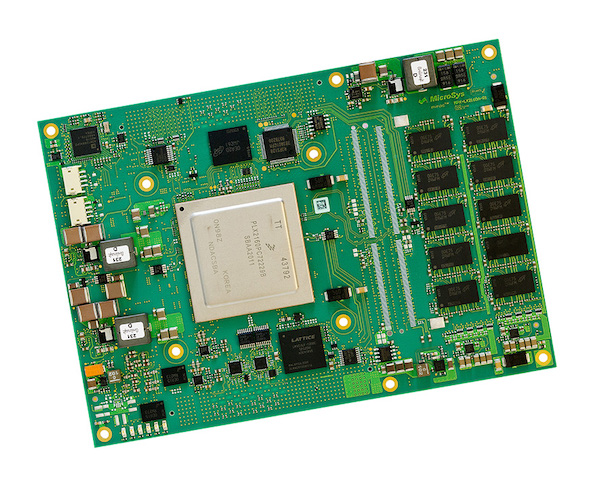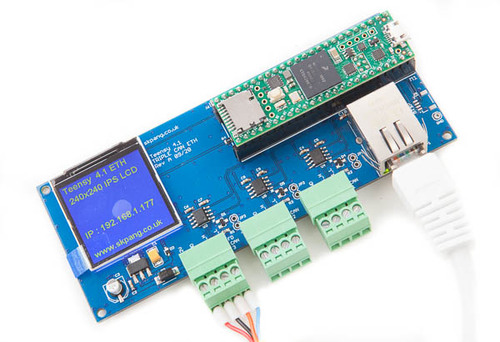Blog
Recent Posts
System-On-Module (SOM) Dedicated To Commercial Vehicles Supports Two CAN FD Interfaces
Posted by on
Microsys Electronics announced its Miriac MPX‑LX2160A, a System-On-Module (SOM) dedicated to commercial vehicles and mobile systems. The module supports two CAN FD interfaces.
The module is based on the NXP LX2160A processor and offers 16 Arm Cortex-A72 cores, which are twice as many as its predecessors. The configuration meets the requirements of (artificial intelligence) edge server applications, autonomous driving, and situational awareness in cobot applications. Typical use cases are for V2X (Vehicle-to-Any) communications, e.g., edge servers in trains, planes, commercial vehicles, autonomous mobile systems, and functional safety applications.
The peripherals include two CAN FD ports, 100-Gbit/s Ethernet, two USB 3.0, SPI, I2C, and various other interfaces. A choice for PCIe 3.0 interfaces is also available. The overall processing performance is supported by a 50-Gbit/s security engine and a 100-Gbit/s compression/decompression engine. The operating temperature from -40 °C to + 85 °C and a power supply of 5 VDC to 12 VDC is possible.
The board support package includes the bootloader configuration and the required Linux drivers. The module is available as an off-the-shelf component or a development kit with a carrier board plus cable set.
After NXP announced their S32G vehicle network processor at this year’s CES show, Microsys created the Miriac MPX-S32G274A SOMs and development kits based on this central processing unit family. The system combines interfaces for the CAN Bus (18 CAN Bus and two CAN FD ports), Flexray, LIN, and Ethernet interfaces for automotive networking.
Teensy 4.1 Triple CAN Bus Board with 240x240 LCD and Ethernet
The board represents a Teensy 4.1 board with triple CAN Bus connections, two CAN 2.0B and one CAN FD and ethernet magjack. Power is applied per an external +12 VDC with reverse voltage protection. Included is also a 240x240 wide-angle IPS TFT LCD.
The Teensy 4.1 is an Arduino-compatible board with an Arm Cortex-M7 microcontroller running at 600 MHz. The board is compatible with the Arduino IDE and the Arduino library. In most cases, code written for another Arduino board works with minimal changes on the Teensy board. As the name implies, the board is tiny. For example, the current form factor is only about 18 by 36 millimeters. However, do not let the size mislead you; these boards pack a ton of functionality. For example, the new Teensy 4.1 features a megabyte of RAM, two megabytes of Flash, a bevy of I/O options, cryptographic support, a hardware floating-point processor (FPU), and a built-in real-time clock (RTC).
PCI-Express (PCIe) CAN Bus/LIN Bus Network Interface For Accessing CAN Bus And LIN Bus Networks
Vector announced its newest PCIe network interface board, the VN1530, supporting four onboard communication ports and two additional piggybacks for increased flexibility. The system supports channel combinations for interfacing to CAN Bus, CAN FD, LIN Bus, and other network technologies. The board addresses the growing demand for more channels, especially at test benches, test PCs and in-rack use.The product [...]
Electronic Control Unit (ECU) With Five CAN Bus Ports Plus Ethernet, Flexray, And LIN Bus Interfaces
Expinovo (Germany) has developed an ECU (electronic control unit) with multiple interfaces used in in-vehicle networks, including five CAN Bus ports. The CatchTheBus® device supports the CAN FD protocols (four of the five CAN interfaces). The programmable ECU by Expinovo also provides interfaces for Ethernet, Flexray, LIN (two ports), and EIA-232 (two ports). Additionally, the product features four [...]
 Loading... Please wait...
Loading... Please wait...


